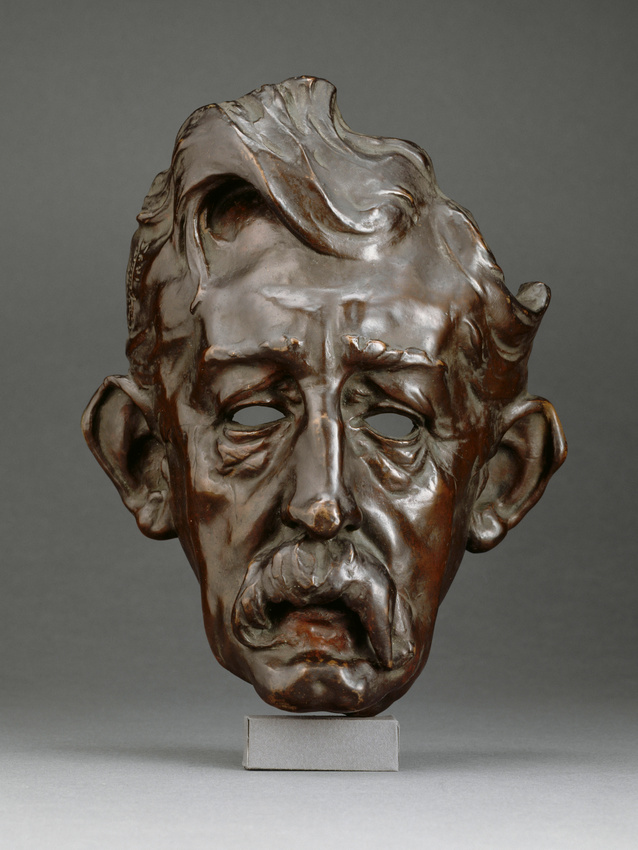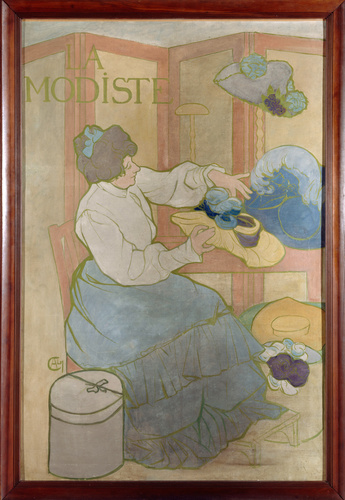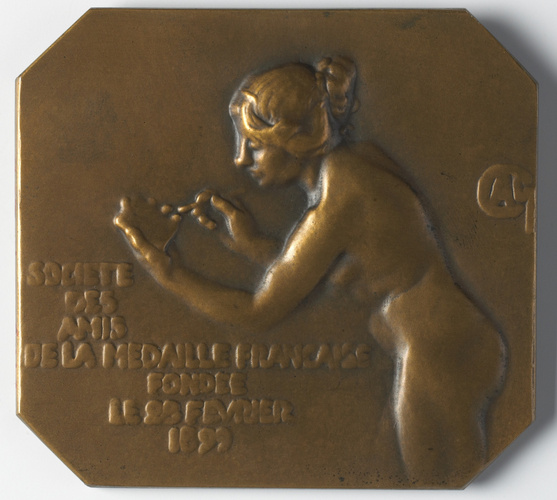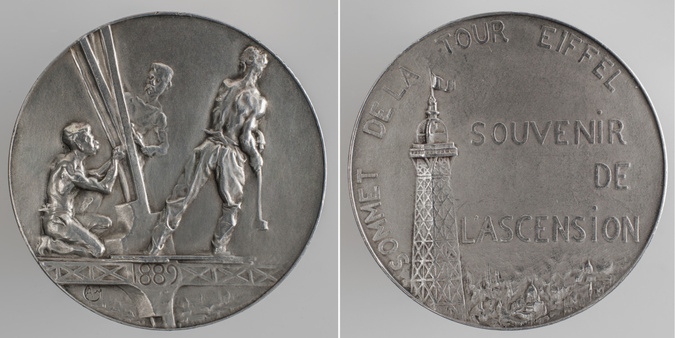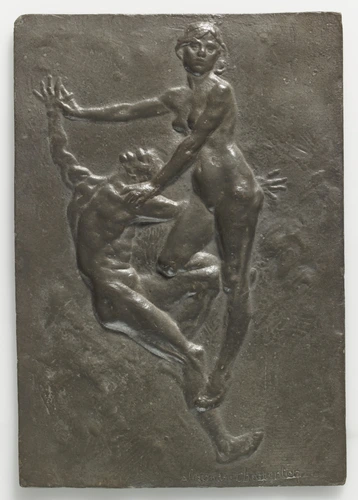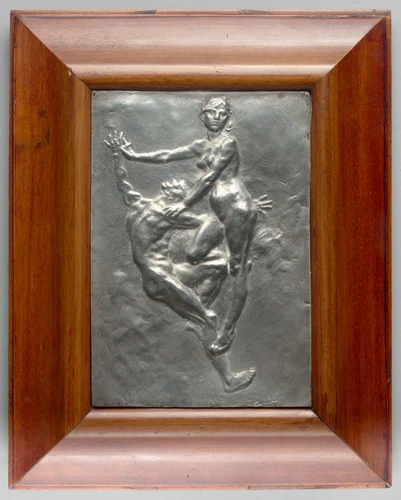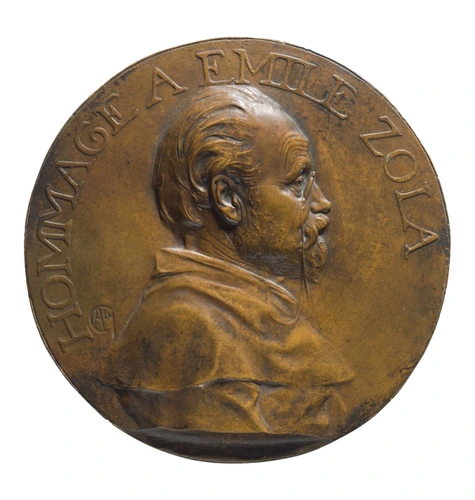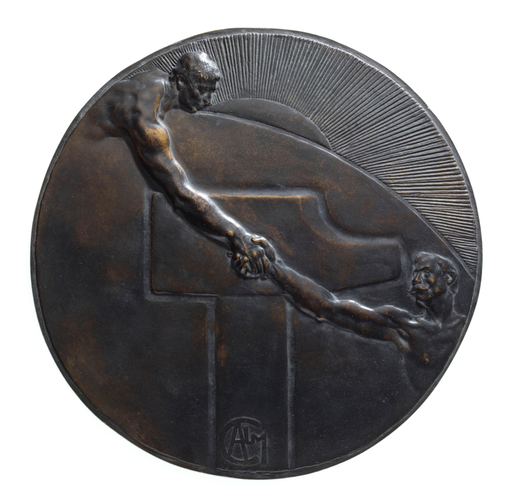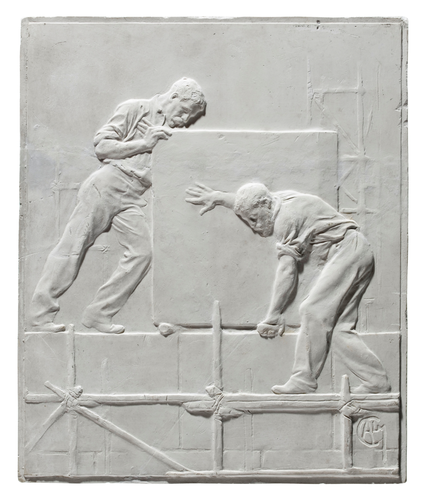Louis Welden Hawkins
During the symbolist period masks were extremely popular, especially in sculpture. Charpentier produced at least three between 1893 and 1894. These were portraits of the painters Hawkins and Van Rysselberghe and of a doctor named Suchet. Do these masks reveal the influence of Carriès, who had explored this theme over a long period of time, or of Desbois? There is a striking parallel with the latter. Charpentier probably had an enamelled stoneware version of one of the masks: Death (Parçay-les-Pins, musée Jules Desbois).
Born in Germany in 1849, Louis Hawkins had an English father and an Austrian mother. He settled in France around 1870 and lived there until his death in 1909. His close friendship with Charpentier probably dated back to when they were students at the Ecole de Beaux-Arts.
Some of their works reveal a reciprocal influence. The model for Hawkins' masterpiece, Séverine (Musée d'Orsay), also posed for Charpentier. The sculptor's masks haunt the painter's engraved portraits. Both artists were keen to portray workers at their task: the 1892 painting: Construction site at the Trocadéro (private collection) inspired the bas-relief Stonecutters (copy at the Musée d'Orsay).
Hawkins response to this mask was to offer his friend one of his own works from 1893: Procession of souls or Christmas, a mystical painting (private collection). It bore the following dedication: "L W Hawkins to his friend A. CHARPENTIER / 93".
Unlike the artist's photographs showing us a “tall Viking with a blonde moustache” (Léon-Paul Fargue), Hawkins features are sagging. But although he looks prematurely worn out, his expression remains striking nonetheless.
